
International Journal for Uncertainty Quantification
Scope & Guideline
Pioneering insights in uncertainty quantification.
Introduction
Aims and Scopes
- Uncertainty Propagation Techniques:
The journal extensively covers methodologies for propagating uncertainty through mathematical and computational models, including but not limited to polynomial chaos expansions, stochastic differential equations, and Gaussian process models. - Sensitivity Analysis:
A significant focus is placed on sensitivity analysis, which investigates how variations in model inputs affect outputs. This includes global sensitivity analysis and local sensitivity measures, aimed at understanding the impact of uncertainties. - Bayesian Inference and Model Calibration:
The journal promotes the use of Bayesian methods for model calibration, allowing for the incorporation of prior knowledge and data into uncertainty quantification frameworks, thus enhancing the reliability of model predictions. - Multifidelity and Multiscale Approaches:
Research on multifidelity methods, which combine models of varying accuracy and computational cost, is prevalent. This approach aims to optimize the balance between computational efficiency and accuracy in uncertainty quantification. - Applications in Engineering and Science:
The journal features applications of uncertainty quantification across diverse fields, including engineering, environmental science, finance, and healthcare, showcasing the relevance of UQ in real-world problems.
Trending and Emerging
- Machine Learning in Uncertainty Quantification:
The integration of machine learning techniques into uncertainty quantification is gaining traction. Researchers are exploring how deep learning and other AI methodologies can enhance UQ processes, particularly in high-dimensional or complex systems. - Adaptive Sampling Techniques:
Adaptive sampling strategies, which dynamically adjust sampling based on current information to improve efficiency and accuracy, are increasingly popular. This trend reflects a shift towards more responsive and resource-efficient UQ methodologies. - Stochastic Inverse Problems:
Research on stochastic inverse problems, where uncertainty is quantified in the context of parameter estimation from data, is emerging as a significant theme. This area is critical for applications where model parameters are uncertain and need to be inferred from observations. - High-Dimensional Uncertainty Quantification:
As models grow in complexity, there is a notable increase in research focused on high-dimensional UQ techniques. This includes methods specifically designed to handle the challenges associated with high-dimensional spaces and their implications for uncertainty analysis. - Multilevel and Multifidelity Approaches:
The trend towards multilevel and multifidelity methodologies continues to rise, as researchers seek efficient ways to combine information from models of varying fidelity to enhance uncertainty quantification without incurring prohibitive computational costs.
Declining or Waning
- Basic Monte Carlo Methods:
While foundational, traditional Monte Carlo methods appear to be less frequently featured, possibly due to advancements in more efficient sampling techniques and the rise of multifidelity approaches that provide similar or superior results. - Deterministic Modeling Approaches:
There is a noticeable decrease in publications focused solely on deterministic models without considering uncertainty. As the field emphasizes uncertainty quantification, deterministic approaches may be seen as less comprehensive. - Classic Statistical Methods:
Classic statistical methods that do not integrate modern computational techniques or uncertainty frameworks are becoming less prominent, as researchers seek more sophisticated approaches that address complex, high-dimensional problems.
Similar Journals

DOKLADY MATHEMATICS
Fostering Excellence in Mathematical ResearchDOKLADY MATHEMATICS is a prestigious journal published by MAIK NAUKA/INTERPERIODICA/SPRINGER, recognized for its significant contributions to the field of mathematics. Since its inception in 1996, the journal has been delivering high-quality research articles, fostering advancement in diverse areas of mathematical sciences. With an ISSN of 1064-5624 and an E-ISSN of 1531-8362, it has established itself within the academic community and holds a respectable Q2 quartile ranking in Mathematics (miscellaneous), indicating its relevance and influence. Although it does not operate under an open-access model, the journal remains an invaluable resource for researchers, professionals, and students, propelling innovation and scholarship in mathematics until 2024. The Scopus ranking situates it at rank #254 out of 399 in the Mathematics General category, showcasing its position within the broader landscape of mathematical journals. This journal is essential for those aiming to stay abreast of the latest findings and theoretical advancements in the mathematics domain.

Austrian Journal of Statistics
Exploring the Depths of Probability and UncertaintyAustrian Journal of Statistics, published by the AUSTRIAN STATISTICAL SOC, serves as a prominent platform for disseminating innovative research in the fields of statistics and applied mathematics. Established as an open-access journal in 1996, it aims to promote the exchange of knowledge and advancements among researchers, academics, and practitioners, particularly in Austria and beyond. With an ISSN of 1026-597X, this journal has gained recognition despite its current standing in the lower quartiles in various Scopus rankings. It covers a wide breadth of topics including statistics, probability, and uncertainty, appealing to a diverse audience of researchers aiming to enhance their understanding of these critical disciplines. By offering unrestricted access to its content, the Austrian Journal of Statistics provides invaluable resources for both emerging and established voices in the field, making it a vital source for academics and professionals alike. Research published here contributes to the ongoing dialogue surrounding statistical methodologies and applications, making it indispensable for anyone engaged in data analysis and interpretation.
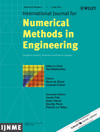
INTERNATIONAL JOURNAL FOR NUMERICAL METHODS IN ENGINEERING
Advancing numerical techniques for engineering excellence.INTERNATIONAL JOURNAL FOR NUMERICAL METHODS IN ENGINEERING, published by WILEY, stands at the forefront of research in the fields of applied mathematics, engineering, and numerical analysis, as evidenced by its prestigious Q1 category rankings across these disciplines for the year 2023. With a long-standing legacy since 1969 and an impressive trajectory projected through 2024, this journal is dedicated to advancing the methodologies and applications of numerical techniques in engineering contexts. Researchers and professionals can access cutting-edge findings that contribute significantly to the optimization and innovation of engineering practices. Although it operates under a subscription model, the journal's impact factor and high citation rates underscore its vital role in influencing contemporary engineering research and education. Its rigorous selection process ensures high-quality, peer-reviewed articles that reflect the latest advancements and challenges in the field, making it an indispensable resource for academics, industry experts, and students alike.

Advances in Continuous and Discrete Models
Bridging Theory and Practice in MathematicsAdvances in Continuous and Discrete Models, published by Springer, serves as a vital resource in the fields of algebra, analysis, and applied mathematics. With an E-ISSN of 2731-4235, this journal aims to bridge theoretical concepts and practical applications, providing a platform for researchers, professionals, and students to disseminate innovative findings and foster collaborative discourse. Since its inception in 2022 and continuing through 2024, the journal has rapidly established itself within its categories, achieving notable Q2 rankings in Algebra and Number Theory, Analysis, and Applied Mathematics, reflecting its significant contribution to these disciplines. With SCOPUS rankings highlighting its reputable standing—such as being in the 83rd percentile for Algebra and Number Theory—this open-access journal encourages knowledge sharing and accessibility for the global academic community. Scholars looking to stay at the forefront of ongoing research and developments will find this publication an invaluable addition to their reading list.
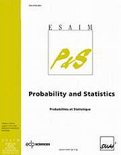
ESAIM-Probability and Statistics
Elevating the discourse in probability and statistics.ESAIM-Probability and Statistics, published by EDP Sciences S A, is a prominent journal focused on advancing the field of probability and statistics. With an ISSN of 1292-8100 and E-ISSN 1262-3318, this journal has been a beacon of scholarly communication since its inception in 1997. Operating out of France, it offers a platform for researchers and professionals to share significant findings and foster collaboration within the statistical community. Designated as Q3 in the Statistics and Probability category for 2023, it plays a vital role in the dissemination of critical research, despite its recent Scopus ranking of 226 out of 278 indicative of its growing visibility and impact. Researchers, students, and professionals alike benefit from its rich pool of analytical insights and innovative methodologies, marking it as an essential resource for those immersed in statistical theory and applications. With a commitment to excellence in research, ESAIM-Probability and Statistics continues to contribute to the instructional and professional development of its readership.

COMPUTATIONAL MATHEMATICS AND MATHEMATICAL PHYSICS
Fostering Collaboration in Cutting-Edge Mathematical ResearchCOMPUTATIONAL MATHEMATICS AND MATHEMATICAL PHYSICS is a prestigious journal published by PLEIADES PUBLISHING INC, dedicated to advancing the fields of computational mathematics and mathematical physics. With an ISSN of 0965-5425 and an E-ISSN of 1555-6662, the journal has established its importance within the academic community since its inception in 1985. It is classified in the third quartile (Q3) for computational mathematics in 2023, and while currently it does not offer open access options, it remains a valuable resource for researchers seeking to disseminate their findings and engage with cutting-edge developments in the field. The journal encompasses a broad spectrum of topics, including numerical analysis, applied mathematics, and the intersection of physics and computational techniques, highlighting its relevance in addressing complex problems in both theoretical and applied contexts. Scholars will find a platform that not only promotes rigorous research but also encourages collaboration and innovation within the scientific community.

Qualitative Theory of Dynamical Systems
Connecting Theory and Practice in Dynamical SystemsQualitative Theory of Dynamical Systems, published by SPRINGER BASEL AG, is a prestigious academic journal that serves as a central platform for the dissemination of research in the realms of applied mathematics and discrete mathematics. With an ISSN of 1575-5460 and an E-ISSN of 1662-3592, this journal has established itself with a strong impact, ranking in the Q2 category for both applied mathematics and discrete mathematics and combinatorics as of 2023. Having converged over critical years—from 1999 to 2005 and from 2008 to 2025—it aims to publish high-quality, peer-reviewed articles that contribute to the understanding of dynamical systems through qualitative methods. With a Scopus rank placing it in the top twenty of discrete mathematics and combinatorics as well as a respectable position in applied mathematics, the journal is considered essential for researchers, professionals, and students looking to stay abreast of the latest theoretical and practical advancements in these vibrant fields. While the journal currently does not offer open access options, its commitment to rigorous scientific inquiry and innovation ensures its lasting significance in mathematical literature.
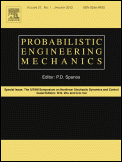
PROBABILISTIC ENGINEERING MECHANICS
Innovating Solutions for Complex Engineering Challenges.PROBABILISTIC ENGINEERING MECHANICS is a premier academic journal published by Elsevier, focusing on the rapidly evolving field of engineering mechanics with a probabilistic approach. Established in 1986, the journal has become an essential resource for researchers, professionals, and students, providing insights into various disciplines such as aerospace engineering, civil and structural engineering, and nuclear energy, among others. With a consistent Q2 ranking across multiple engineering categories, it reflects high-quality research and significant contributions to the field. Although it does not operate under an open access model, it offers invaluable access to advanced methodologies and innovative applications in engineering. The journal aims to promote the development and dissemination of probabilistic approaches to tackle complex engineering problems, thus bridging the gap between theoretical research and practical application. Located in the heart of the UK, PROBABILISTIC ENGINEERING MECHANICS continues to shape the future of engineering through rigorous peer-reviewed articles that influence both academia and industry.
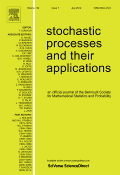
STOCHASTIC PROCESSES AND THEIR APPLICATIONS
Connecting Theory and Practice in Stochastic ApplicationsSTOCHASTIC PROCESSES AND THEIR APPLICATIONS, published by Elsevier, is a leading journal in the realms of Applied Mathematics, Modeling and Simulation, and Statistics and Probability. Established in 1973 and continually evolving with the latest research trends, this journal has secured its place in the Q1 category across multiple disciplines, reflecting its influence and prestige in the academic community. With a Scopus Rank of #90 in Statistics and Probability and notable rankings in Applied Mathematics and Modeling and Simulation, it serves as a crucial platform for disseminating cutting-edge research findings and applications of stochastic processes. Although it operates under a traditional access model, its comprehensive scope encourages submissions from a diverse range of topics that push the boundaries of knowledge in probability theory and its practical applications. Researchers, professionals, and students are invited to contribute original research, reviews, and case studies that can propel the field into new territories, further solidifying the journal's role as an essential resource for advancing understanding in stochastic processes.
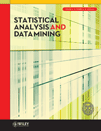
Statistical Analysis and Data Mining
Harnessing Data for Groundbreaking ResearchStatistical Analysis and Data Mining is a leading journal published by WILEY, dedicated to exploring the latest advancements in statistical methods and data mining techniques. With an ISSN of 1932-1864 and an E-ISSN of 1932-1872, this journal serves as a significant platform for researchers and professionals in statistical analysis, computer science applications, and information systems. Covering a wide range of topics from innovative analytical methodologies to emerging data mining algorithms, the journal aims to disseminate high-quality research that contributes to the evolving landscape of data science. Ranked in the Q2 category for the fields of Analysis, Computer Science Applications, and Information Systems in 2023, it emphasizes its relevance and impact within academia. While it offers limited Open Access options, the insights shared in this publication are integral for those wishing to stay ahead in fast-paced research and data-driven industries. Since its inception in 2008 and continuing through 2024, Statistical Analysis and Data Mining invites submissions that reflect rigorous empirical research coupled with practical implications, making it a vital resource for the academic community.